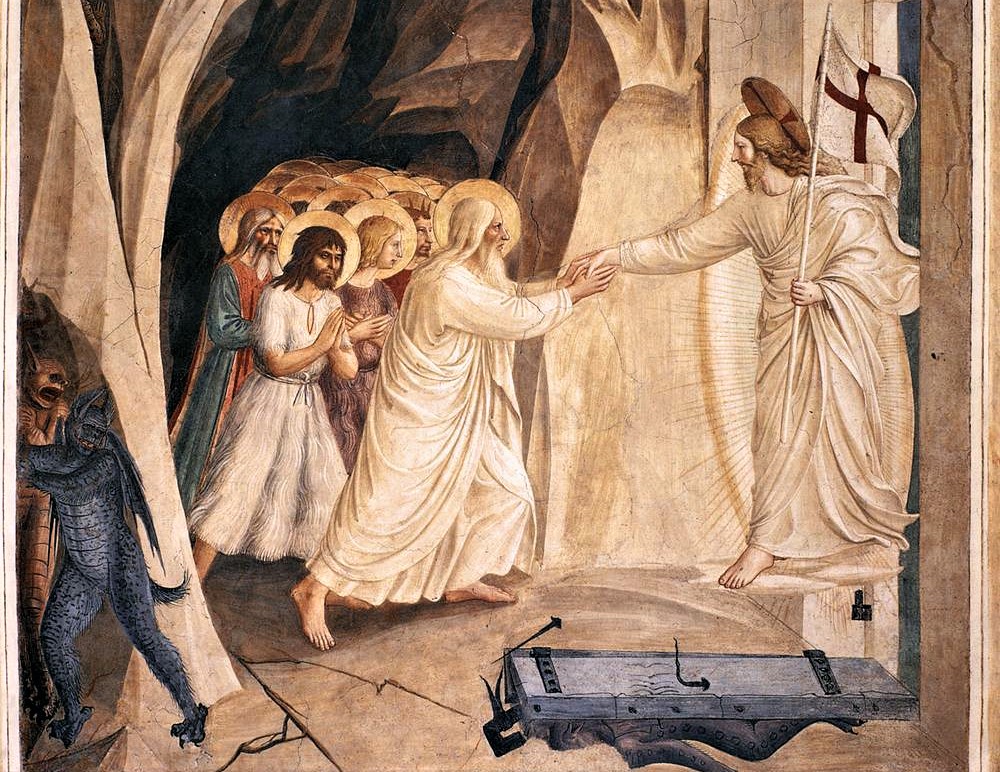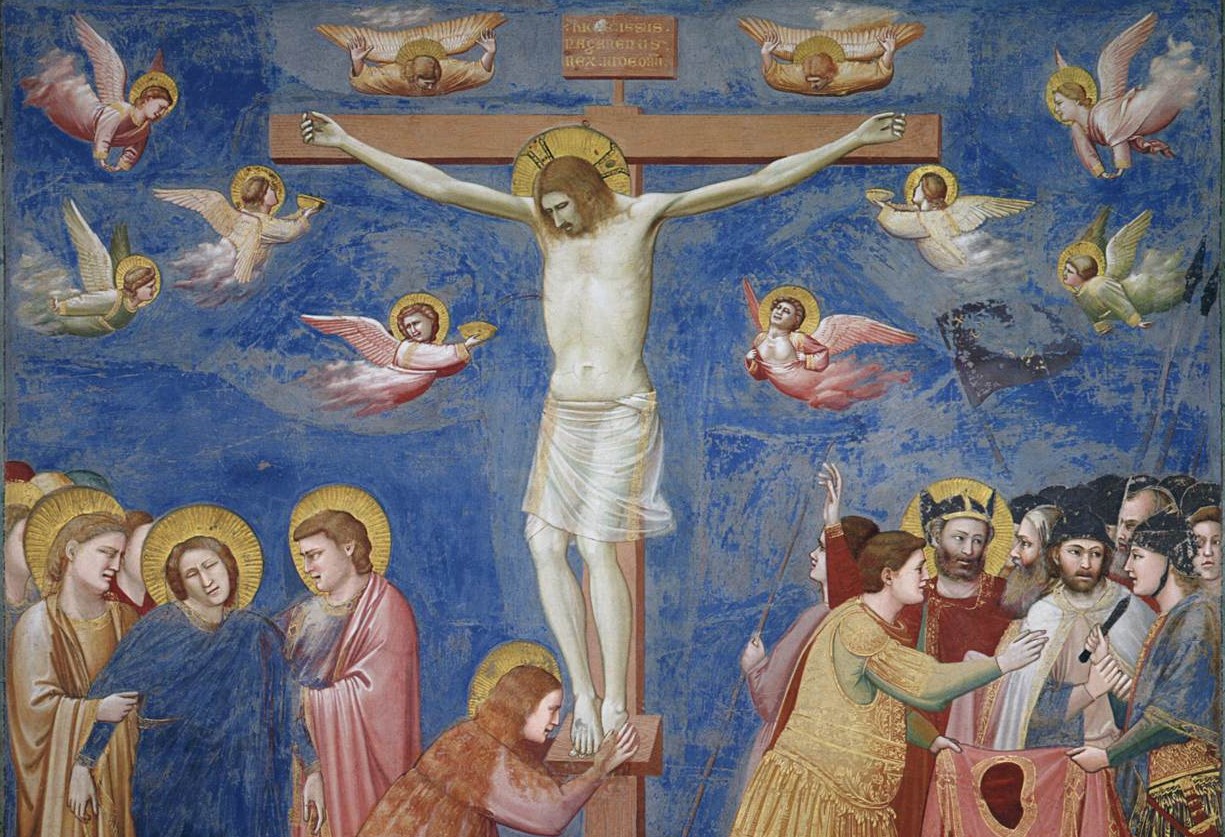Jesus was arrested late Thursday evening. The Scriptures recount,
They took Jesus to the high priest, and all the chief priests, the elders and the teachers of the law came together (Mark 14:53).
According to Mark’s chronology there was a sham of a trial, based on false evidence and distortions of Jesus’ teachings.
Now the chief priests and the whole Sanhedrin were seeking testimony against Jesus to put Him to death, but they did not find any. For many bore false witness against Jesus, but their testimony was inconsistent. Then some men stood up and testified falsely against Him: “We heard Him say, ‘I will destroy this man-made temple, and in three days I will build another that is made without hands.’” But even their testimony was inconsistent.
So the high priest stood up before them and questioned Jesus, “Have You no answer? What is it these men are testifying against You?” But Jesus remained silent and made no reply. Again the high priest questioned Him, “Are You the Christ, the Son of the Blessed One?”
“I am,” said Jesus, “and you will see the Son of Man sitting at the right hand of Power and coming with the clouds of heaven.”
At this, the high priest tore his clothes and declared, “Why do we need any more witnesses? You have heard the blasphemy. What is your verdict?” And they all condemned Him as deserving of death. Then some of them began to spit on Him. They blindfolded Him, struck Him with their fists, and said to Him, “Prophesy!” And the officers received Him with slaps in His face (Mark 14:53-65).
According to tradition, Jesus spent the rest of the night in the dungeon under the House of Caiaphas. It had doubled as a kind of cistern for holding rainwater.
The events of this early Friday morning are tightly packed. In the space of three or four hours, Jesus is sent to Pilate, then to Herod, then back to Pilate, questioned, condemned to die, and led out to be crucified by 9:00 AM.
The events begin around 6:00 AM:
Early in the morning, the chief priests, elders, scribes, and the whole Sanhedrin devised a plan. They bound Jesus, led Him away, and handed Him over to Pilate (Mark 15:1).
Pilate is less than enthusiastic to be saddled with this interrogation, but fearing a riot if he does not, he enters into the fray. Pilate’s behavior is a portrait in vacillation. According to Luke, he first seeks to transfer the case to Herod, who is nearby in Jerusalem (See Luke 23:6-12). However, Jesus says not a word to Herod. So after making sport of Jesus, Herod sends Him right back to Pilate. In another attempt to placate the crowd and evade making a decision, Pilate presents to them what amounts to a fake Messiah, aptly named “Barabbas” (which means “son of the father”). Can Barabbas save the day? He cannot, for he is not the true “Son of the Father.” Only Jesus can deliver Pilate—or any of us, for that matter.
I will not be treating the whole trial before Pilate in today’s post. (I’ve written about it in more detail here: The Trial Before Pilate.) In the end, though Pilate concludes that Jesus is innocent of the charges, he hands Him over to be crucified. In so doing, he is likely trying to save his own career. He will not take a stand for Jesus. Rather, he sits upon the judgment seat, violates his own conscience, and condemns Jesus to death. It is about the third hour (9:00 AM).
There is some debate about the specific time of day in the various biblical accounts. Mark 15:25 says that Jesus is crucified at the third hour (9:00 AM). In John 19:14 the crucifixion is set at the sixth hour (Noon). Both Matthew 27:45 and Luke 23:44 hint at a time closer to noon in their reference to a darkness coming over the land from noon until 3:00 PM.
In considering these “issues” of the exact time of day, we ought to remember that the people of Jesus’ era did not have clocks and watches. They did not speak or think of time in the precise ways that we modern Westerners do. Time was spoken of in general ways; the mention of the third hour, or the sixth hour, or the ninth hour could include a broader swath of time relatively near that declared hour. It is a little bit like our terms “mid-morning” or “mid-afternoon,” which can refer to a period of several hours. Mark does not necessarily mean precisely at 9:00 AM nor does John mean precisely at noon.
There is a lot of overlap in references to the third hour, the sixth hour, and the ninth hour, softening the possible conflict between the accounts. The need to nail down the exact times of day of the various events says more about our modern obsession with time than it does about accounts that are close, even if not precise, descriptions of the events.
Comparing all the texts leads to a general time frame. Thus, it would seem that Jesus undergoes trials before Pilate and Herod in the early morning (somewhere between 6:00 and 9:00 AM). He is sentenced by Pilate to crucifixion somewhere in mid-morning. He is mocked and led out to be crucified in the late morning. Near noon, He is stripped of His outer garments and hung on the cross. From about noon through the early afternoon a darkness comes over the land and Jesus hangs on the cross. He dies in the midafternoon, at around 3:00 PM.
What of this darkness of some three hours? In Luke 23:44, we read, It was now about the sixth hour, and there was darkness over the whole land until the ninth hour (i.e., from noon until 3:00 PM).
Although this seems to describe a solar eclipse, it isn’t appropriate to insist that it was an eclipse (at least as we define the term today). Matthew, Mark, and Luke all speak to the darkness of that day using the Greek term σκότος (skotos), meaning simply “darkness.” Only Luke went on to state the reason for the darkness: the sun was darkened (Luke 23:45). He even used the Greek word ἐκλιπόντος (eklipontos), from which the word “eclipse” was derived. In Greek, however, the word eklipontos simply means “darkened,” whereas our word “eclipse” refers to a darkening as a result of the moon blocking the light of the sun. However, that is not necessarily (or even likely) what Luke meant here.
As a general rule, one should avoid applying a scientific explanation to a text when that may not have been the author’s intention. That there was darkness over the land from about noon until three is certainly attested to in the sacred texts, but the cause of that darkness is not definitively stated to be an eclipse, at least not as we use the term today. Perhaps God made use of other natural causes, such as very heavy clouds, to cause the light of the sun to dim. It is also possible that the darkness was of purely supernatural origin and was experienced only by some of those present.
Trying to explain the darkness in terms of the laws of science risks doing a disservice to the text by missing its deeper meaning: that the darkness of sin had reached its zenith. Whatever the physical mechanism of the darkness, its deepest cause was sin and evil.
Jesus said elsewhere, “This is the judgment: Light has come into the world, but men loved darkness instead of light because their deeds were evil” (Jn 3:19). Referring to His passion, He also said, “Night is coming, when no one can work” (Jn 9:4). When Judas left the Last Supper to betray Jesus, John observed simply and profoundly, And it was night (Jn 13:30). Yes, a deep darkness had come upon the world.
It is simply not possible here to fully comment on all the details of the crucifixion. While they are historical incidents, they are also of deep spiritual significance. I leave the consideration of most of those details to other posts and to your reflection. Jesus speaks seven times while on the cross: He asks the Father to forgive us. He bestows mercy on the repentant thief. He gives us His mother and asks us to take her into the home of our hearts. He expresses his feelings of abandonment. He voices his thirst. He announces the completion of His mission. He commends His spirit to the Father and gives up His spirit.
The earth shakes. While earthquakes were common in the region, interpreting the quake merely in scientific terms misses its theological significance. Christ has rent the earth and descended to Sheol, there to preach to the dead. The veil in the Temple has been torn from top to bottom, giving us access to the Father. He has rent our hearts and laid bare our thoughts. This also prefigures the Last Judgment:
Death is struck, and nature quaking,
all creation is awaking,
to its judge and answer making (from the Dies Irae).
It is three o’clock in the afternoon; a great silence is upon the earth. The Word of God has died in the flesh. He has gone among the dead to awaken them.
Cross-posted at the Catholic Standard: Passiontide Chronology: Good Friday


